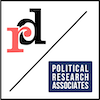If someone from 1965 were to arrive in a time machine, there’s likely much about our current state of affairs that would shock them. But I cannot imagine anything that would be more confusing than the love affair between the U.S. Right and Russia—the extent of which has come into stark clarity in the wake of Russia’s invasion of Ukraine. Beyond Donald Trump’s slightly unhinged, but wholly expected, comments praising Putin’s “genius” in illegally invading a sovereign nation, there are plenty of current “mainstream” Republican elected officials who seem unclear as to whether Russian aggression on the front porch of NATO is a good idea or not.
How did this ever happen?
The answer, as with most things wrong with the contemporary GOP, lies in the party’s almost complete takeover by evangelicals that began during the Nixon era.
Throughout the Cold War, the official atheism of Communist countries and the suppression of religion behind the Iron Curtain became a rallying cry for the American Right in general and American evangelicals in particular, who made it their mission to save “Godless Russia,” seemingly unaware that before 1917, it had, in fact, been “Holy Mother Russia.”
In a pattern we’ve seen repeated again and again among American evangelicals before and since, they understood the persecution of the local indigenous Christian population and the suppression of a region’s historical Christian institutions to be primarily about themselves. And so, American evangelicals set about converting Russia to Christianity, a task that even a brief look at history would have revealed was already accomplished by the Byzantine Empire in the Middle Ages.
Almost immediately following the collapse of the Soviet Union, American evangelicals began to flood into Russia, with a generation coming of age on mission trips to Moscow and Bible-buying fundraisers for St. Petersburg. Instead of meeting with hostility from the Russian Orthodox Church, these Protestant firebrands were generally welcomed. Which is the part of the story that’s perhaps most difficult to explain; Orthodoxy as a faith tradition has spent centuries resolutely opposed to corruption or co-option from outside.
With a fear of foreign contamination that would put the most strident member of the Academie Française to shame, Orthodox identity is resolutely grounded in notions of continuity and purity. Money and political influence are certainly part of the equation here, but there is another factor: on the other side of the Atlantic, the converts were flowing the other way.
The influx of Protestant American converts, many from the evangelical tradition, but also conservative mainline Protestants, in the late 1980s and early 1990s, radically changed the face of Orthodox Christianity in America. Once a church almost exclusively made up of immigrants and their descendants, these Americans with no historical ties to Orthodoxy, became a majority in a number of Orthodox jurisdictions in the United States and brought with them their cultural baggage—most importantly the Culture Wars.
The changes were obvious and immediate, both in traditional Orthodox countries and in the diaspora. Of course, Orthodoxy has never been gay-affirming (despite John Boswell’s eloquent but unsubstantiated claims) and abortion had been cause for excommunication since the Middle Ages, but the fact is no one really talked about those pet issues of the American Christian Right. Now Putin and Kirill unite around anti-LGBTQ laws, and Greek bishops make bizarre claims about why people are gay.
The creation of an Orthodox Christianity under the influence of American evangelical norms had real consequences, the rise of Orthodoxy as the new-found spiritual home of white nationalists being one of the more extreme. Among the less extreme consequences was that the rising number of conservative American Christians who identified as Orthodox started to soften opinions and change American rightwing perceptions of Russia.
Arguably, what this influx of American evangelicals into American Orthodox churches did was create a bridge over which American evangelicals in Russia were able to cross. An alliance began to take root which shaped Russia and the American Right as both headed into the 21st century.
Taking a page right out of the playbook of the Moral Majority, the Russian Orthodox Church has positioned itself as the leader of the conservative/traditionalist position, not only in Russia, but around the world. Putin’s speech last Monday night made clear that Russia doesn’t see itself as challenging the West and its values; rather, Putin’s Russia is positioning itself as the last and rightful guardian of what the the West once was and what it ought to be again, a Christian culture centered around family, faith, and “traditional values” that have been abandoned in the face of secular modernity.
Jerry Falwell’s words have flown across time and space and landed in the mouth of a Russian president. Frequently referring to the “so-called West,” Putin lists the crimes of the NATO nations as including that “They sought to destroy our traditional values and force on us their false values that would erode us, our people from within, the attitudes they have been aggressively imposing on their countries, attitudes that are directly leading to degradation and degeneration, because they are contrary to human nature. This is not going to happen.”
The Russian Orthodox Church and the Russia of today is in no small part what American evangelicals have helped make it, from building literal churches to sending religious educational material, to guiding political policy. In return, both have found a powerful ally very close to the beating heart of American power. Today, as Ukrainian blood flows, some of that blood is on the hands of those American evangelicals who went off to convert a nation that was Christian before Europeans arrived in the Americas. Every mission trip and box of Bibles that arrived “to Russia with love” helped to create this moment. Make no mistake about it.


